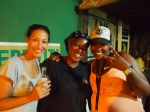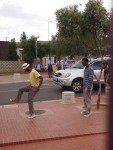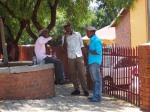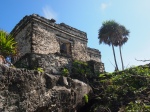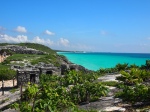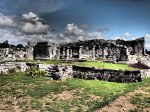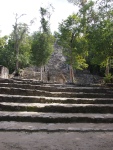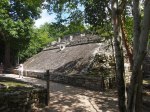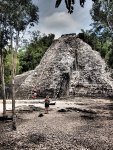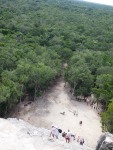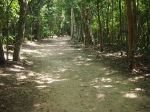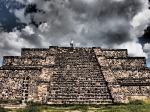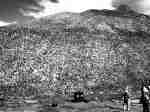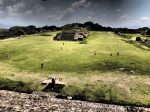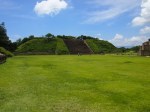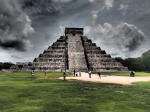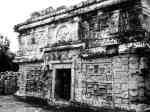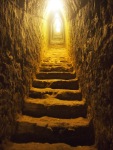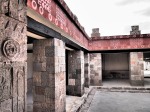We were lucky to be able to spend a week and a half in Istanbul – an amazing city. Here’s a few photos.
Tag Archives: history
Selcuk and Ephesus
Due to dwindling finances, we could only really spend 3 weeks in Turkey, and so had to limit where we travelled to. A must see for me was Ephesus.
We went there via Izmir, where we spent a few days. It was also well worth going to, with a great castle, Roman ruins and a nice seaside vibe.
We then caught the train to Selcuk, a lovely town that is only a few kilometres from Ephesus. It is well worth stopping at for a few days as it has a lot to see besides Ephesus – St Johns Basilica, the Virgin Mary’s house, The Temple of Artemis, a number of other interesting older buildings. There’s also a really beautiful village called Sirince just 8km away which is an easy 20 minute trip by local bus.
The main site I wanted to see was the ancient city of Ephesus, once home to 200,0000 people, and now a well-preserved tourist attraction. Here’s some photos of Ephesus and Selcuk.

Message of prayer at St Mary’s House near Selcuk. A lot of the messages seemed to be prayers for wealth. Very Christian.

The main amphitheatre at Ephesus, which seats 20,000 people. St Paul make his famous speech here, to try and convert the population to Christianity. It didn’t go down too well.
Sailing down the Nile
In January 2013 we went on a fantastic 4 day/3nights Nile cruise from Aswan to Luxor.
We’d booked through a travel agent in Cairo – but due to the low numbers of tourists in Egypt at the moment, there’s no real need to book in advance. There are dozens and dozens of boats – they are all very similar (most claim to be 5 star) and offer similar prices. We were booked on a boat called the “Grand Princess” which was lovely.
It was only US$55 per person per night including all meals (in a double room – all rooms have river views).
Like most of the cruises this leaves Aswan on Friday evening and arrives in Luxor on Saturday evening, but most people seemed to stay for 3 nights, and head off the boat during the days in Aswan and Luxor to do tours.
Breakfast, lunch and dinner were all pretty good (buffet style) and entertainment was offered every second night. There was also a great bar (expensive drinks) and a very cool rooftop with sun loungers and a pool.
When the boat was travelling down the Nile, it was lovely to just spend time in the room, which all have sliding glass doors which you can open to the amazing Nile views. The rooftop was also a great place to watch life on the Nile go by.
On the way to Luxor all of the boats stopped at the temples of Kom Ombo (and crocodile mummy museum) and Edfu, giving you time to head off the boat and check them out. Both are worth visiting, and despite turning up at the same time as about 6 other boats, were not crowded.
The Nile is a beautiful river with amazing history and this stretch of it is relatively quiet and not too developed – most of the scenery was farmlands and small villages. It was a very relaxing way to spend 4 days and a highly recommended trip!
A visit to the pyramids
The last thing we expected on our trip to the pyramids was to be freezing cold and practically alone. Winter is usually peak season for Egyptian tourism, but since the revolution all the most popular tourist sites are pretty much dead zones. Which was great for us, but not so great for the Egyptians.
While I can appreciate the sheer majesty of the pyramids, their age, their size and their history – something about the experience was a little underwhelming. I think the fact that where once the glorious and majestic Nile once ran in front of the pyramids has now been replaced with a sprawling urban mass. In fact one of the best views of the pyramids can now be seen from the Pizza Hut building, which is just depressing. Couple this with the fact that the recent (actually not so recent if you account for Mubarak’s entire reign oh and the entire period of colonialism) troubles this country has experienced has only amplified the desperation of its people. Everywhere you go, and I mean everywhere, in any major tourist site you will be hassled. It’s relentless and arbitrary and beyond annoying. All the guidebooks tell you to beware of the hassling but the level has increased so much that it’s almost hostile.
It’s a tragedy what has happened to this country. We saw practically no police the entire duration of our trip – in fact the whole country had a wild west feeling to it. In major tourist attractions like the Egyptian Museum in Cairo the toilets were dirty and largely unclean without toilet paper. Unpaid staff were buying tissues with their own money and trying to earn some money by selling these to toilet goers for tips. And the museum wasn’t cheap. The place just reeked of corruption and greed. And a country once gloried for its advanced sanitation and hygiene programs is now almost one giant toilet bowl. Dirty, uncared for and desolate.
I heard that a lot of Egypt’s treasures now live in the museums and squares of other countries around the world, and originally this angered me. How neo-colonialist and paternalistic I thought. But when I visited Egypt and saw the way in which some of their sites were (not) cared for I had to be thankful that at least some of the historic relics will survive.
Egypt has such potential but it is a ravaged country. Ravaged by greed and corruption and blinkered religious fervour. And they largely have the West to thank for it – first through colonialism and then through their support of one of the most slimey despots of our time – Mubarak.
Why you should visit Soweto
OK I realise it’s been a long time between posts, put it down to lack of adequate net access coupled with an extended bout of holiday laziness. The longer it went on the harder it was to just ‘do’. So the next few posts may be random and out of any particular order. But for today, I’ve decided to start back with Soweto…
Soweto is a place that’s pretty much synonymous with the Apartheid struggle in South Africa, the Soweto uprising was there and it is the birthplace of the ANC. It’s where the students rose up against the powers that were and refused to be taught in Afrikaans – the language of the oppressor. They paid with blood for their uprising but they were the events that shone a light on their plight.
We stayed in Orlando West, Soweto, which is where notable ANC members – Nelson Mandela, Walter Sisulu and Bishop Desmond Tutu (along with many others) all lived.
When we mentioned to my friends and family in South Africa we were staying in Soweto, we were met with warnings and pleas to ‘be careful’. But the truth is we felt safer there than many other places in South Africa. There were no high fences, no begging, no feeling of insecurity – everyone was relaxed. Of course, one must be careful everywhere, but Orlando West is very safe and very welcoming for tourists. There are loads of B&Bs and a few great restaurants, as well as the Nelson Mandela museum (his old house converted) and the Hector Peterson museum (the youngest person to be shot by police during the student uprising against Afrikaans). We even got to go inside Walter Sisulu’s house, which is well and truly off the tourist map, and that’s because we dared to walk around the streets and chat to people – and one of those people happened to be a relative of Walter’s who showed us around.

Famous image by Sam Nzima of Hector Pieterson just after he was shot by South African police who opened fire on unarmed protestors in 1976. The photo spread through global news networks and became a symbol of the brutality of Apartheid.
The Soweto we saw was welcoming and vibrant – a far cry from it’s dangerous past. I only wish some of the people who talk about how dangerous townships are would take the time to challenge some of their beliefs. They’d be surprised. Or perhaps they don’t want to be?
- Drinking at a shebeen
- A couple of dancers on the street in Soweto
- Local life
The best thing about Soweto is being able to talk to the people who live there everyday and dispel the myths that surround it. Someone wise once said the truth will set us free…
Mayan ruins of Coba and Tulum
Coba and Tulum are two fantastic Mayan ruins nearby to Playa del Carmen – below are some photos from both.
Tulum gets a lot of tourists because it’s so close to Playa and Cancun (and has a beautiful beach) – whereas Coba is a bit further away, and a bit quieter (if you arrive before or after the tour groups do). Coba is also a much larger site – there’s about 6km of walking needed to access all the ruins. If you’re not up to walking, you can hire a bicycle (35MXD) or get someone else to drive you around in a cyclo/bicycle-taxi (140MXD normally but 70MXD in the low season).
These sites are both worth checking out!
- Tulum is a Pre-Columbian Maya walled city which served as a major port for Cobá. Tulum was one of the last cities inhabited and built by the Mayans, and was at its height between the 13th and 15th centuries.
- The beautiful Carribbean by the Tulum ruins
- Central ruins in Tulum
- La Iglesia at Coba
- A ball court in Coba
- The Nohoch Mul pyramid, the tallest in the Yucatan at 42 metres
- View from the top of the Nohoch Mul pyramid (42m high)
- A series of stone and plaster roads run from central Coba to various smaller sites in the area. These are known by the Maya term sacbe – the longest is over 100 kilometres.
Some old stuff
There are heaps of amazing historical buildings and temples in Mexico. This post will give you absolutely no information about any of them. But I’ve included some nice photos.
- Tenochtilan – Temple of the Moon
- Another random temple
- Temple of the Sun – Tenochtilan
- Monte Alban, Oaxaca State
- Monte Alban
- El Castillo at Chichen Itza
- The “nunnery” at Chichen Itza – Templo de los Tableros. Mayan.
- Inside the Cholula Pyramid – the largest in the world (in volume)
- Temple at Tenochtilan
- The main pyramid of Palenque




























